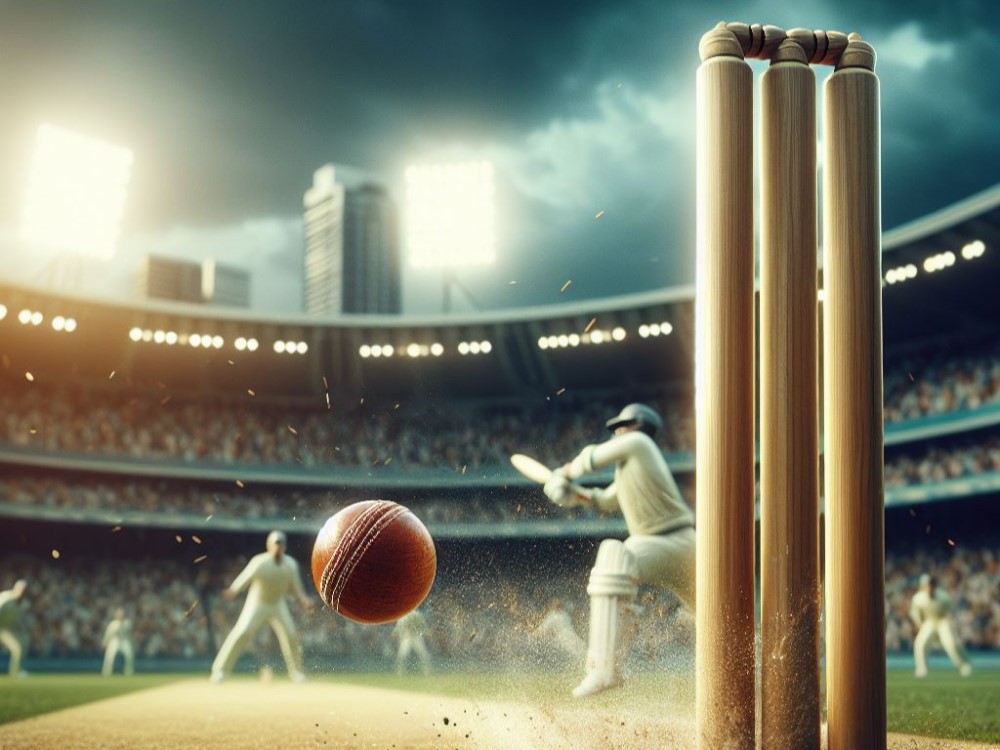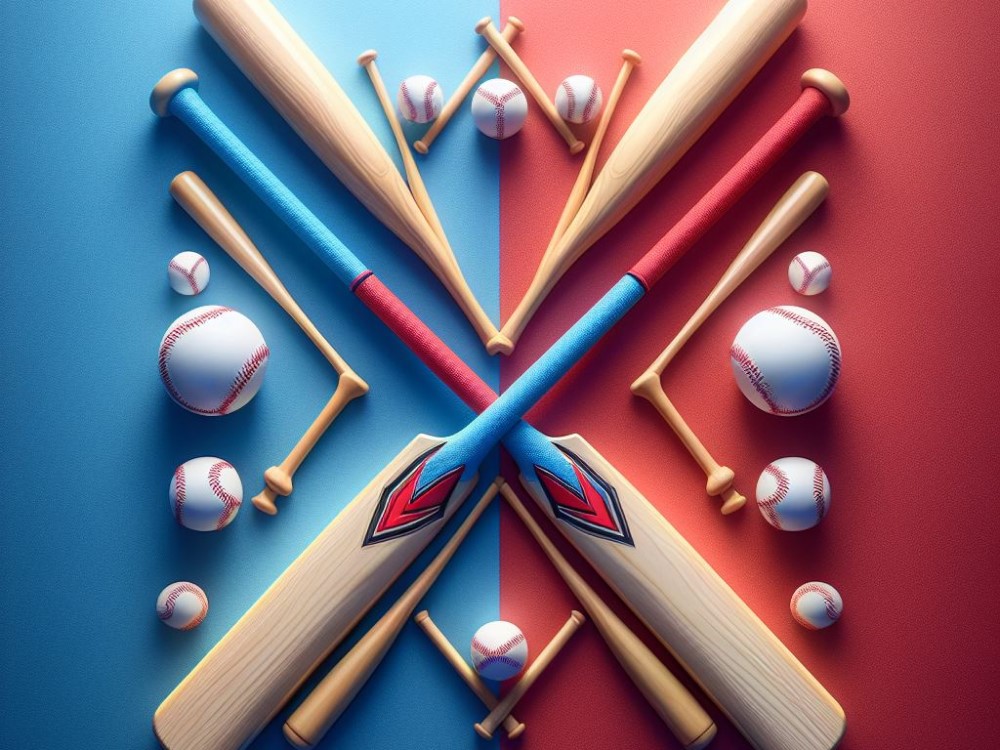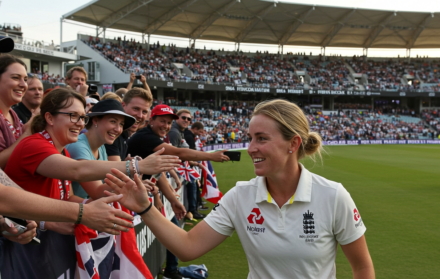
Comparing Cricket and Baseball: Insights into Scoring, Tactics, and Player Roles
Cricket and baseball, two popular bat-and-ball sports, may share certain similarities but are distinct in various aspects. Understanding the differences between the two is essential for enthusiasts and sports fans. This article aims to provide a comprehensive comparison, highlighting key variations in objectives, scoring systems, field layout, equipment, gameplay, techniques, and global popularity.
Let’s delve into the specifics and explore the dissimilarities that set cricket apart from baseball.
Cricket matches are structured as a series of innings, with each team taking turns to bat and bowl. The objective is to accumulate runs by striking the ball and successfully completing runs between wickets. Cricket scoring involves hitting boundaries (4 runs for hitting the ball to the boundary line, 6 runs for clearing it), running between the wickets, and penalty runs for violations.
On the other hand, baseball games consist of innings with both teams having a chance to bat and field. The objective is to score runs by hitting the ball and advancing around a series of bases. Scoring in baseball involves moving players around the bases and ultimately back to home plate.
The cricket field is oval-shaped and can vary in size, but typically consists of a rectangular pitch in the center and boundary lines that define the playing area. Cricket matches are played on grass, and the field includes various positions and zones for players.
Baseball fields are diamond-shaped and standardized in size. They consist of a diamond-shaped infield with bases and a grass outfield. The outfield is delineated by a fence or wall, and the positioning of players is specialized based on their roles.
Cricket requires equipment such as a bat, ball, stumps, and protective gear like pads and helmets. Baseball utilizes a bat, ball, gloves for fielders, and helmets for batters and catchers.
Cricket gameplay is structured with two teams taking turns to bat and field. The bowler delivers the ball to the batsman, who attempts to hit it and score runs. The opposing team aims to dismiss the batsmen and restrict the scoring. Cricket has complex rules, including LBW (Leg Before Wicket) and fielding restrictions.
Baseball gameplay consists of pitching, hitting, and fielding. The pitcher throws the ball towards a batter who tries to hit it and advance around the bases. The fielding team seeks to eliminate batters and prevent runs. Baseball has rules such as strikes, balls, and fouls, which determine the outcome of each pitch.
Batting techniques in cricket involve a variety of shots and strategies to accumulate runs. Baseball batting focuses on hitting the ball with power and accuracy. The techniques and stances adopted by batters in each sport differ significantly.
Pitching and throwing techniques also vary. Cricket bowlers aim to deliver the ball with precision and generate movement off the pitch. Baseball pitchers focus on speed, accuracy, and various types of pitches like fastballs, curveballs, and sliders.
Objectives and Scoring System

In cricket, the objectives and scoring system revolve around the batting team’s aim to score as many runs as possible. The opposing bowling team, on the other hand, seeks to dismiss the batsmen. The batting team can accumulate runs by striking the ball and swiftly running between the wickets.
Their scoring system involves adding runs through hitting boundaries, which result in either 4 or 6 runs, or by completing runs between the wickets. Whenever a batsman is dismissed, the bowling team successfully earns a wicket. Ultimately, the team with the highest score emerges victorious.
Similarly, in baseball, the objectives and scoring system are centered on the batting team’s goal of surpassing the opponent’s run count. The scoring system in this sport entails the players touching the bases and eventually reaching home plate in order to earn a run.
How is a Cricket Match Structured and Scored?
A cricket match is structured and scored in a specific way. It is divided into innings, with each team getting the chance to both bat and bowl. During each inning, the main goal of the batting team is to accumulate as many runs as possible while the bowling team aims to dismiss their opponents.
Runs are earned by hitting the ball and running between the wickets. Ultimately, the team that achieves a higher total score at the conclusion of the match emerges as the winner. Cricket has a complex scoring system that offers various methods of accumulating runs and also incorporates penalties for dismissals.
This intricate structure and scoring system of a cricket match provide a truly distinctive and strategic experience for both players and fans.
How is a Baseball Game Structured and Scored?
A baseball game consists of innings where each team has the opportunity to bat and field. In each inning, the team that bats tries to score runs by hitting the ball and running around four bases to reach home plate. The team that fields attempts to get the batters out by catching the ball, tagging them with the ball, or throwing them out at a base.
Each team gets three outs per inning. Runs are scored when a batter successfully crosses home plate. The team with the most runs at the end of the game wins. Points are not awarded in baseball; instead, runs determine the winner.
To understand how a baseball game is structured and scored, familiarize yourself with the basic rules and terminology. This will help you grasp the dynamics of the game and enjoy it to its fullest. Furthermore, following a favorite team or player can enhance your engagement, allowing you to become more invested in the outcomes of the games.
If possible, attending games in person can provide a firsthand experience of the excitement that surrounds baseball. So, next time you’re wondering how a baseball game is structured and scored, remember these suggestions and make the most out of your baseball experience.
The Field and Equipment
The lush green field of cricket and the diamond-shaped battleground of baseball have their own distinct characteristics. In this section, we’ll explore the unique aspects of the playing fields and the equipment used in both sports.
From the contrasting dimensions of the cricket field to the specialized gear employed in baseball, we’ll uncover the fascinating differences that shape the essence of each game. So, let’s step onto the field and dive into the world of cricket and baseball, where every element plays a vital role in the thrilling action.
Comparison of Cricket Field and Baseball Field
The cricket field and baseball field have distinct layouts and dimensions, contributing to the differences in gameplay between the two sports.
In cricket, the field is typically a large oval shape, while in baseball, it is a small diamond shape. Cricket fields usually have a grass playing surface, whereas baseball fields can have either grass or artificial turf. Boundary lines enclose the cricket field, while baseball fields have foul lines and outfield walls.
In the center of a cricket field, there is a pitched area known as the pitch, while in baseball, there’s a pitcher’s mound. Cricket fields have three sets of wooden stumps called wickets at each end, while baseball fields have one home plate at one end.
The playing area in cricket is large, with an approximate 450 ft radius, whereas in baseball, it’s smaller, with around 90 ft diamond sides. Additionally, cricket fields do not have a specific outfield boundary, while baseball fields have an outfield fence serving as a boundary.
Understanding the differences between the cricket field and baseball field is crucial for players and spectators alike. The dimensions and layout of each field greatly impact the strategies and gameplay dynamics in both sports. It is notable that cricket fields tend to be larger and accommodate a greater diversity of shots, while baseball fields are designed specifically for the unique dynamics of the game.
Differences in Equipment Used in Cricket and Baseball
Differences in equipment used in cricket and baseball can be observed in various aspects.
In cricket, the bat is typically flat, wide, and equipped with a long handle, whereas in baseball, the bat is cylindrical with a tapering barrel. The cricket ball is hard and covered with leather, while the baseball is hollow and covered with white leather.
Cricket utilizes a wicket consisting of three vertical stumps and bails, whereas baseball has four cushions arranged in a diamond shape called bases. Protective gear in cricket includes a helmet, pads, and gloves, while baseball players wear helmets, gloves, and catcher’s equipment. Additionally, fielders in cricket use gloves, while in baseball, fielders utilize gloves along with a protective mask.
These equipment differences exemplify the distinct requirements and strategies of each sport.
Gameplay and Rules

Cricket and baseball may appear to be similar at a glance, but a deeper look into the gameplay and rules reveals fascinating distinctions. In this section, we’ll uncover the unique elements that make cricket and baseball stand apart.
Get ready to explore the ins and outs of cricket’s gameplay and rules, as well as gain insights into the dynamics of baseball. From the pitch to the field, let’s unravel the intricacies of these two beloved sports.
Overview of Cricket Gameplay and Rules
Cricket gameplay involves two teams taking turns to bat and field. The batting team aims to score runs by hitting the ball and running between the wickets. The fielding team tries to get the batting players out by catching the ball or hitting the wickets.
The game is divided into overs, with each over consisting of six balls. Fielding positions are strategically placed to prevent scoring. There are several ways to be dismissed, such as getting caught, bowled, or run out. Umpires enforce the rules and make decisions. The team with the highest score wins. Understanding the rules is crucial to enjoying and playing cricket.
An overview of cricket gameplay and rules involves two teams taking turns to bat and field. The batting team aims to score runs by hitting the ball and running between the wickets. The fielding team tries to get the batting players out by catching the ball or hitting the wickets.
The game is divided into overs, with each over consisting of six balls. Fielding positions are strategically placed to prevent scoring. There are several ways to be dismissed, such as getting caught, bowled, or run out. Umpires enforce the rules and make decisions. The team with the highest score wins. Understanding the rules is crucial to enjoying and playing cricket.
Overview of Baseball Gameplay and Rules
Baseball gameplay involves two teams taking turns batting and fielding. The game consists of innings, with each team getting a chance to bat and field. The objective is to score runs by hitting the ball and running around the bases without getting out.
The batting team aims to hit the ball thrown by the pitcher and reach the bases to score runs. The fielding team tries to get the batting players out by catching the ball, tagging them with the ball, or forcing them out at the bases. The game follows specific rules regarding strikes, balls, fair and foul balls, and outs.
In an overview of baseball gameplay and rules, two teams participate in the game, taking turns in batting and fielding. The objective is to score runs by hitting the ball and successfully running around the bases without getting out.
The batting team faces the challenge of hitting the ball, thrown by the pitcher, and reaching the bases to earn runs. On the other hand, the fielding team aims to get the batting players out by various means such as catching the ball, tagging them with the ball, or forcing them out at the bases. The game adheres to specific rules concerning strikes, balls, fair and foul balls, as well as outs.
Differences in Techniques and Skills

When it comes to the game of cricket versus baseball, the techniques and skills involved are as diverse as the players themselves. In this section, we’ll dive into the contrasting worlds of batting techniques and pitching/throwing techniques. Get ready to uncover the unique intricacies and strategies that set these two sports apart. From the artistry of cricket batting to the powerful throws of baseball, we’ll explore how these different techniques shape the dynamics of each game.
Batting Techniques in Cricket vs Baseball
When comparing batting techniques in cricket to baseball, several key differences emerge. In cricket, the batsman typically stands in front of the wicket and grips the bat with both hands, while in baseball, the batter stands next to home plate with a similar grip.
While batting, the cricket batsman employs a variety of shots, including defensive strokes, aggressive shots, and scoring shots, whereas the baseball batter utilizes different swings such as power swings, contact swings, and bunting.
Additionally, the cricket batsman needs to accurately judge the line and length of the ball, while the baseball batter must possess good hand-eye coordination to make contact with the ball effectively. Footwork plays a crucial role in both sports but manifests differently; in cricket, batsmen utilize techniques like forward defense or stepping back, whereas in baseball, footwork aids in maintaining balance and generating power in the swing.
Furthermore, batsmen in cricket may need to adjust their technique based on the type of bowler they face, such as a spin or fast bowler, while batters in baseball may adapt to different types of pitchers, such as a fastball or knuckleball pitcher.
Pitching and Throwing Techniques in Cricket vs Baseball
The pitching and throwing techniques in cricket and baseball have distinct differences. In cricket, bowlers aim to deliver the ball towards the batsman using overhand, underhand, or sidearm techniques. This difference is evident when comparing cricket to baseball.
The bowler’s objective is to create variations in spin, pace, and bounce to deceive the batsman. On the other hand, baseball pitchers use overhand throwing techniques to deliver the ball towards the batter, commonly aiming for strikes or inducing batters to swing and miss.
The contrast between the two sports becomes apparent when examining the pitching and throwing techniques. Pitchers utilize a variety of pitches, such as fastballs, curveballs, and change-ups, to keep batters off balance. It is interesting to note the differences in pitching and throwing techniques in cricket versus baseball.
The techniques employed in both sports require skill and precision but have different objectives and methods.
Popularity and Global Reach

In the realm of sports, cricket and baseball stand as two giants in terms of popularity and global reach. As we delve into the comparisons of their worldwide prominence, we uncover fascinating insights into the widespread fascination these sports create among fans from different corners of the globe.
Brace yourself to discover the captivating statistics, events, and intriguing facts showcasing the widespread appeal and cultural impact of these beloved sports in our global sports landscape.





